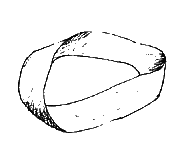
Unix Editor Bare Essentials
If you are editing text on Unix, it is likely either vi, pico, or emacs will be available there. These are the most widespread editors, though there are many other text editors available on Unix as well. However, many of them are subsets or clones of these three. The table below will teach you the most essential commands you need to use each editor: how to open a file, edit it, and then exit (and either save or discard your changes).
| vi | pico | emacs | |
|---|---|---|---|
| Strength | available even on simple/"low-tech" servers | simple to learn, easy to use | powerful and extensible |
| Weakness | different ("strange") editing paradigm; need to know keystrokes | too simple/basic for heavy use | need to know complex keystrokes; requires a lot of system resources |
| Command to open a file | vi filename | pico filename | emacs filename |
| To move cursor | Use arrow keys (or h, j, k, l) | Use arrow keys (or ^F, ^B, ^N, ^P) | Use arrow keys (or ^F, ^B, ^N, ^P) |
| To start editing text | Type a (append) or i (insert) or s (substitute), then type. Type ESC to stop text input mode. | Just start typing | Just start typing |
| To delete | Character: x Line: dd |
Character: Del Line: ^K |
Character: Del Line: ^K |
| To save file | :w | ^O | ^X ^S |
| To quit | :q :q! to force quit, discarding changes ZZ to quit, saving any changes |
^X (answer yes or no to save changes) | ^X ^C (answer yes or no to save changes) |
KEY: ^X == Ctrl-x == "hold down Control and press x"
To learn more about these editors, consult their respective man pages, tutorials, or menus.